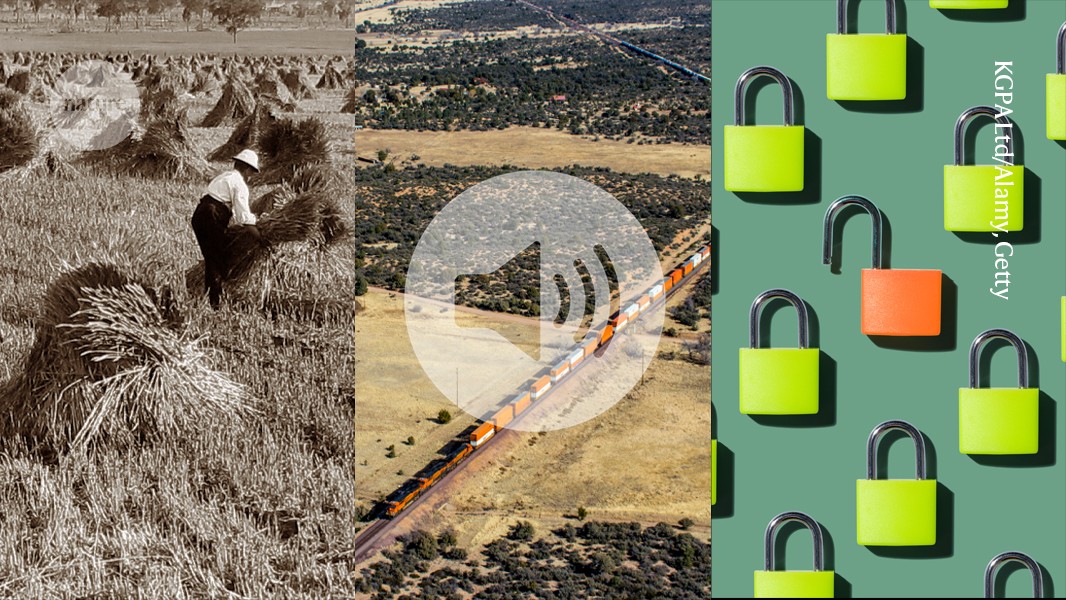Chatbot solves a Rubik’s Cube in around a quarter of a second: An AI approach to ‘open-washing’ its AI models
The market capitalization of chipmaker Nvidia amid a surge in demand for computer chips that power AI models — making it the most valuable company in the world. 3 min read by The Guardian.
Facebook owner Meta has expanded its AI translation model to 204 languages, including 150 ‘low-resource’ ones. These tongues do not have enough data for a machine-translation system. The model was fed with thousands of Seed sentences created by professional translators. Although the translations are “not very good yet”, says Gaelic linguist William Lamb, he applauds the team’s effort. “What they should do … if they really want to improve the translation is to talk to the people, the native Gaelic speakers that still live and breathe the language,” he said.
A chatbot can check another’s workings by asking it the same question multiple times and assessing how much the responses differ from one another. A high degree of randomness in meaning indicates the output isn’t reliable. If I wanted to know if you were just messing with things, I would ask you the same question over and over again. “If you give a different answer every time … something’s not right.” Two humans looked at 100 of the answers of the first chatbot and they all agreed with it 98% of the time.
Blink and you’ll miss it: Mitsubishi’s TOKUFASTbot solves a Rubik’s Cube in around a quarter of a second — a new world record for a robot. An AI algorithm identifies the cube’s colours, particularly the difficult-to-distinguish hues red and orange, and then generates the shortest rotation sequence to a solution. The cube became jammed during the first attempt because the robot’s motors were so fast. (Smithsonian Magazine | 4 min read)
Robotic AI systems could replace humans for peer review: a biomedical engineering editorial suggests that AI might be the answer to the problems of traditional peer review
Specialist AI systems could soon provide most of the feedback given during traditional peer review, argues a Nature Biomedical Engineering editorial. Human reviewers could focus on high-level conceptual and technical feedback. The editorial suggests that artificial intelligence agents might even become a go-to interface for reading papers, with each paper having its own persistent “author chatbot” ready to answer any queries. But first, the community will need to solve problems that could be exacerbated by AI systems, such as fake data and plagiarism.
Tech giants such as Meta and Microsoft are releasing little information such as their code or training data in order to describe their models as open source. The small players with few resources were the ones who went the extra mile, says language scientist Mark Dingemanse. The open-source systems will be able to go over the EU’s transparency requirements. A Google spokesperson remarked that “existing open-source concepts can’t always be directly applied to AI systems”.
Estimates suggest that self-driven cars have fewer accidents than humans do, but research is hampered by the fact that there is limited data. They analysed thousands of accidents and found almost 550 in which people and autonomous vehicles crashed in similar circumstances. During turns, the technology crashed twice as often as humans and, at dusk or dawn, five times more often. But without reliable reporting from self-driving car companies, the number of crashes available to analyse is “so low that no sweeping conclusions can be made” about the technology’s safety, says autonomous-vehicle researcher Missy Cummings.
Why ‘open source’ AIs could be anything but, the derailment risks of long freight trains, and breeding better wheat (with an excerpt from López)
Some autistic people are turning to chatbot companions such as Paradot or Replika in search of connections they can’t always find with other individuals. “These interactions give me more confidence when talking to real humans because they’ve helped me to try certain conversation skills that can be applied in real life,” says Elías López, who was diagnosed as autistic at the age of 30. So far, there has been little research into whether these chatbots have therapeutic benefits. Some mental-healthcare professionals are concerned that the practice could exacerbate users’ isolation. The true value of the risks should be clear, according to clinical psychologist Catherine Lord.
There are no federal limits on how long a freight train can be in the US, but there are questions about whether longer locomotives are more prone to derailing. To find out, the team analysed the data to see if they could predict the chances of a longer train coming off the tracks. They showed that replacing two 50-car freight trains with one 100-car train raises the odds of derailment by 11%, with the chances increasing the longer a train gets. Although derailments are uncommon, this could change as economic pressures lead the freight industry to experiment with ever-longer trains.
Modern wheat crops could be bred to be less disease tolerant and have less need forfertilizer if genes from century-old wheat varieties were used. A huge amount of genetic diversity unseen in modern crops can be seen in the genomes of wheat that were held in a seed collection during the 1920s and ’30s. Plant breeding enabled the team to identify some of the areas of the plants’ genomes responsible for traits such as nutritional content and stress tolerance. It’s hoped that in the long term this knowledge could be used to improve modern varieties of wheat.
Nature Podcast: Is There a Catching Season in Nature’s Quest for the Strangest Planetary Nebulae?
Never miss an episode. You can subscribe to the Nature Podcast on a number of popular streaming and streaming services. An RSS feed for the Nature Podcast
is available too.


